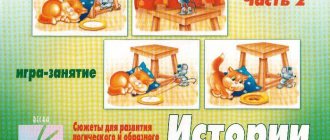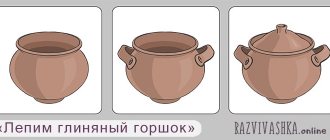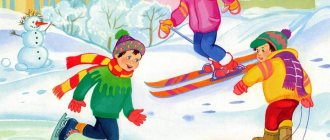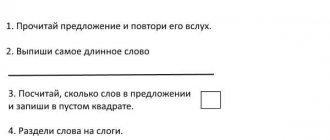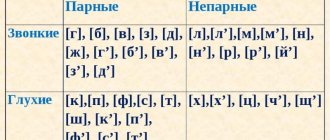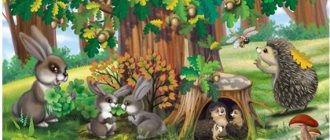Teaching children storytelling based on a picture, a series of plot paintings.
Painting lessons are important in the system of teaching storytelling.
two types of such classes held in kindergarten
: looking at paintings with a conversation about them and children composing stories based on the paintings.
At the first stage, preschoolers master predominantly dialogical speech: they learn to listen to the teacher’s questions, answer them, and ask; the latter contribute to the development of monologue speech: children acquire the skills of composing a story in which all parts are contextually related to each other, logically and syntactically combined.
In developing the skills to describe pictures and compose narrative stories, specially designed series of didactic pictures of different types are used.
Subject paintings
– they depict one or several objects without any plot interaction between them (furniture, clothing, dishes, animals; “Horse with a foal”, “Cow with a calf” from the series “Domestic Animals” - author S. A. Veretennikova, artist A. Komarov).
Subject paintings
, where objects and characters are in plot interaction with each other.
Subject pictures are conducive to nomenclatural activities related to the listing and description of the qualities and features of the depicted object. The plot picture prompts the child to tell a story related to the interpretation of the action.
A series or set of paintings related by a single plot content
, for example (story in pictures) “Stories in Pictures” by N. Radlov (M., Planet, 1992).
Attention!
If you need help writing a paper, we recommend turning to professionals. More than 70,000 authors are ready to help you right now. Free adjustments and improvements. Find out the cost of your work.
Cost calculationGuaranteesReviews
Reproductions of paintings by masters of art are also used.
:
- landscape paintings: A. Savrasov “The Rooks Have Arrived”; I. Levitan “Golden Autumn”, “Spring. Big Water", "March"; K. Yuon “March Sun”; A. Kuindzhi “Birch Grove”; I. Shishkin “Morning in a pine forest”, “Pine forest”, “Forest cutting”; V. Vasnetsov “Alyonushka”; V. Polenov “Autumn in Abramtsevo”, “Golden Autumn”, etc.;
- still life: K. Petrov-Vodkin “Birch cherry in a glass”, “Glass and apple branch”; I. Mashkov “Rowan”, “Still Life with Watermelon”; P. Konchalovsky “Poppies”, “Lilacs at the Window”.
When selecting paintings for storytelling
They are subject to
a number of requirements
:
— the content of the picture should be interesting, understandable, and foster a positive attitude towards the environment;
- the picture must be highly artistic;
— images of characters, animals and other objects must be realistic;
- a conventional formalistic image is not always perceived by children;
— you should pay attention to the accessibility of not only the content, but also the image.
There should be no pictures with an excessive accumulation of details, otherwise children will be distracted from the main thing. Strong reduction and obscuring of objects makes them unrecognizable. Excessive shading, sketchiness, and incompleteness of the drawing should be avoided.
When choosing a painting for a lesson
, the teacher must take into account
that children know
:
1.About the characters of the picture (girl, boy, bun);
2. Their actions (walking, playing, eating);
3.About the place of action (Where? In the forest, at home);
4.About the time of action (When?).
In accordance with the “Kindergarten Education Program,” painting viewing classes are conducted in all age groups
.
But if children of younger and middle age learn to describe pictures
based
on the questions of the teacher
, then
in the senior and preparatory
groups for school the main attention is paid to
independent storytelling
.
One of the techniques that prepares children to tell a story based on a picture is looking at and talking about its content.
Looking at paintings
, according to E.I. Tikheyeva, has
a triple goal
: exercise in observation, development of thinking, imagination, logical judgment and development of the child’s speech.
A preschool child loves to look at pictures and talks about them vividly and interestedly. His desire is great to share his impressions with others about what he sees.
Thus, looking at the picture encourages the child to engage in speech activity.
,
determines the theme and content of stories, their moral orientation.
But a child can tell about the content of a picture only if he understands it. The degree of coherence, accuracy, and completeness of stories largely depends on how correctly the child perceived, comprehended, and experienced what was depicted.
how clear and emotionally significant the plot and images of the picture became for him.
In order for children to better understand the content of the paintings, the teacher conducts a preliminary conversation
, which uses the children’s personal experiences and memories of events similar to those depicted in the picture.
In the process of examination, the vocabulary is activated and refined, dialogical speech develops: the ability to answer questions, justify one’s answers, and ask questions oneself. Consequently, the goal of a conversation based on a picture
is to lead children to the correct perception and understanding of the main content of the picture and at the same time the development of dialogical speech.
Children do not know how to look at pictures, cannot always establish relationships between characters, and sometimes do not understand how objects are depicted. Therefore, it is necessary to teach them to look and see the object or plot in the picture, to develop observation skills. Children are taught to notice details in a picture: background, landscape, weather conditions, to include in their story a description of nature + a literary word (a poem, an excerpt from prose, a riddle, a tongue twister).
So, when looking at the painting “Autumn” from the series “Our Tanya” in the second younger group. The teacher draws attention to the multicolored bouquet of autumn leaves. This causes revival in children, a certain emotional mood, as it is associated with vivid life experiences: they themselves collected yellow leaves and made bouquets from them.
The transition from the introductory conversation to viewing the picture itself should be logically consistent and smooth. The questions “Who do you see in the picture?”, “What is the girl carrying in her hand?” The teacher turns the children's attention to the picture, immediately highlighting the central image in it. Children look with interest at a girl with a bouquet of the same autumn leaves that they themselves recently collected.
Looking at pictures prepares children to write descriptions and stories.
.
By conveying what is depicted in the picture in a story, the child, with the help of the teacher, learns to correlate the word with the visually perceived material
.
He begins to focus on the selection of words
, in practice he learns
how important an exact word designation
is, etc. The great Russian teacher Ushinsky justified the value of a picture by the fact that the image of an object excites the child’s thought and causes the expression of this thought in an “independent word.”
There are several types of children's stories based on the picture.
:
— description of subject paintings;
- description of the plot;
- a story based on a sequential series of plot paintings;
- a narrative story based on a plot picture;
-description of a landscape painting and still life.
In teaching children to tell stories from a picture
It is customary to distinguish
several stages
.
At a younger age
a preparatory stage
is carried out , which aims to enrich the vocabulary, activate children’s speech, teach them to look at the picture and answer the teacher’s questions.
In middle preschool age
Children are taught to compose
descriptive stories based on subject and plot pictures
, first based on questions from the teacher, and then on their own.
Senior preschool age
characterized by increased speech and mental activity of children.
Therefore, a child can independently or with a little help from a teacher compose not only descriptive, but also narrative stories, and come up with the beginning and end of the plot of a picture.
Techniques for teaching children storytelling that can be used when working with paintings
. These include:
- sample storytelling;
— analysis of a sample of storytelling;
- shared storytelling;
— storytelling plan (2-3 questions);
- telling in parts.
Storytelling sample
- this is a short, lively description of the depicted object or a statement of the event, accessible to children for imitation and borrowing.
Sample story
is most widely used in the initial stages of education and is intended for imitation and borrowing by children. The sample tells the child the approximate content, sequence and structure of the monologue, its volume, facilitates the selection of vocabulary, grammatical forms, and methods of intratextual communication. The sample shows an approximate result that children should achieve. In this regard, it should be short, accessible and interesting in content and form, lively and expressive. The sample should be pronounced clearly, at a moderate pace, and loud enough. The content of the sample must have educational value.
Analysis of a storytelling sample
. The purpose of this technique is to attract children's attention to the sequence and structure of the story. First, the teacher himself explains how the story begins, what is said later, and what its ending is. Children are gradually involved in analyzing the content and structure of the sample. This technique is aimed at familiarizing children with the construction of different types of monologues; it tells them the plan for future stories.
Shared storytelling
. This technique involves the joint construction of short statements, when the adult begins the phrase and the child finishes it. It is used in younger groups, as well as in working with children for whom a higher level of speech activity is too difficult. If necessary, this technique is used individually (junior group) or with all children (middle group). Shared storytelling can be combined with dramatization of different plots. Gradually, children can be introduced to simple improvisations.
Story plan
– these are 2-3 questions that determine its content and sequence. It is first used together with a model, and then becomes a separate teaching technique. The plan helps to consistently isolate and characterize the details of the content, as well as the selection of facts, description of the characters, place and time of action, and development of the plot. Questions in the form of an outline help you remember and reproduce events in a certain order.
Telling in parts
. Essentially, this is also a type of collective storytelling, in which each of the narrators creates part of the text. For each part, a plan is made, and then 2-3 statements, which are combined at the end by the teacher or a well-narrated child.
The variety of methods and techniques used in working with preschoolers allows the child to develop literate speech and the ability to operate with vocabulary by examining and describing a series of plot pictures used in a preschool institution.
Classes to familiarize children with paintings can be conducted using a variety of techniques. Usually the lesson begins with an introductory conversation, the main methodological technique
-
questions from the teacher
. The teacher’s questions encourage children not only to identify objects and their qualities, but also to explain the phenomena depicted in the plot paintings that are understandable to the child.
After the conversation, the teacher himself talks about what is drawn in the picture. In this case, it is recommended to use works of art, for example, short stories on this topic. It is advisable to introduce gaming techniques. Examination of object pictures must be associated with children’s personal experience; it can be accompanied by examination of a similar toy. After the lesson, the painting remains in the group for several days; work with it continues outside of class. The same picture can be used several times during the year, but at the same time the teacher must set different tasks, gradually complicating them.
It is advisable to combine painting work with other types of activities: music, artistic work, dramatization games, excursions, etc.
Class structure
Junior preschool age.
Target
: teach children to look at a picture, notice the most important thing in it and gradually move them from a simple listing of objects to coherent statements (answers to the teacher’s questions).
1. Preliminary conversation to prepare for the perception of the content of the picture (reliance on the personal experience of children, creating an emotional mood).
2. Looking at the picture.
3. Conversation based on its content. Questions should be clear, concise, consistent, highlight the central image, and help a holistic perception of the picture.
4. The teacher’s story based on the picture. It is possible to read a work of fiction, ask riddles, etc.
Middle preschool age.
Target:
learn to compose descriptive stories based on questions and speech patterns of the teacher.
1. Preliminary conversation to prepare for the perception of the content of the picture (reliance on the personal experience of children, creating an emotional mood).
2. Looking at the picture.
3. Conversation based on its content.
4. The goal is to compose a story based on the picture.
5. Joint storytelling between the teacher and the children: a speech sample (an example of a short and complete statement), the teacher begins, and the child continues the description. By the end of the year, bring children to an independent story.
6. The teacher’s summary story.
Senior preschool age.
Target
: teach children to independently (with a little help from the teacher) compose descriptive and narrative stories, come up with the beginning and end of the plot of the picture.
1. Preliminary conversation.
2. Looking at the picture.
3. Conversation about the main points of the plot.
4. Goal setting for composing a story.
5. Communicate the story plan (or discuss it with the children).
6. Children's stories (at the beginning of the year - a method of joint actions: the teacher begins, the children continue and finish the story, collective compilation of a story: several storytellers) with an assessment of speech activity.
7. The lesson ends with a good example of a story (from the child or teacher).
8. Summary of the lesson (brief formulation of the theme and plot of the story).
In case of difficulties for children, help, instructions from the teacher, and a speech sample before the children’s stories are acceptable.
So, the main methodological techniques: conversation about the key points of the plot, joint speech actions, collective story, speech sample (for example, at the beginning, middle and end of the lesson).
School preparatory group.
Target:
learn to independently invent events that preceded and followed those depicted in the picture. Activate the imagination using the technique of “entering the picture.” Learn to describe events using a series of pictures.
1. Preliminary conversation preparing for the perception of the picture.
2. Looking at the picture.
3. Conversation about the picture (including questions that activate the imagination: what can you hear, feel, being in the scene of the picture, etc.)
4. Target setting for compiling a story according to plan.
5. Drawing up and discussing a story plan with children.
6. Children's stories (collective story).
7. Evaluation of children's stories (completeness of the story, sequence of events presented, use of different intonations, rate of speech, figurative expressions, etc.).
8. At the end of the lesson, children should hear a good speech sample (from the child or teacher).
9. Results of the lesson with a brief statement by the children of the goal, theme of the story, etc.
Note:
1. Higher demands are placed on the stories of children of senior preschool age: accurate presentation of the plot, use of a variety of linguistic means.
2. A story - a model is given in the senior and especially in the preparatory to school groups for general imitation, and not for simple reproduction. But at the same time, depending on the complexity of the task, a speech sample of the entire story or part of it is acceptable at the beginning, middle or end of the lesson. It is possible to use a literary sample.
3. The role of the teacher is changing - he no longer takes a direct part in compiling stories, but only manages the children’s activities, intervening only if necessary.
4. Children of older preschool age must be taught to notice details in a picture: background, landscape, weather conditions, and to include descriptions of nature in their stories.
5. Various grammatical and lexical exercises can be included in conversations on the content of the picture. As a result of such exercises, children's stories will become more colorful and enriched with various descriptions (seasons, weather, characters, etc.).
Before the lesson “teaching storytelling from a picture”
Previous work
is required .
For example, before writing a descriptive story based on the painting “Cat with Kittens.”
1. Observe a live cat with kittens;
2. Invite each child to treat the animals with what they like;
3. Expand knowledge about the characteristics, appearance, habits of different animals (through illustrations, reading fiction);
4. Play board and printed games, for example, “big-little”;
5. Invite each child to compare two toys.
Preparatory work helps to reproduce in the child’s real life those connections and dependencies that he will have to establish in the picture and explain in monologue.
Example lesson
:
Topic: Compiling a descriptive story based on the painting “Cat with Kittens” from the series Pets.
Target
: consolidate the ability to compose a story based on a picture, reflecting what was seen in the picture and using personal experience; learn to correlate the names of animals and their cubs, consolidate words denoting an action; cultivate an interest in animals, a desire to care for them, and talk about them.
Vocabulary work
– white-footed, red, gray.
Progress
:
1. Show the picture, remember the title, come up with a new one.
2. Questions for children: Who is depicted in the picture? What do kittens do? What is the ginger kitten doing? What other kitten do you see? What can you say about him? What is the third kitten doing? Which cat is mom? How does she look at kittens?
3. Sample story from a teacher.
4. Writing stories for children.
5. Evaluation of children's stories by the teacher and children.
6. Game: teacher - cat - mother, children - kittens, children execute commands (physical exercises).
7. The teacher offers to listen to the story, accompanied by a display of toys and illustrations.
8. Analysis of the lesson (questions to the children: What did you learn? What did you understand?)
We will help you write any paper on a similar topic.
- Essay
Teaching children storytelling based on a picture, a series of plot paintings.
From 250 rub.
- Test
Teaching children storytelling based on a picture, a series of plot paintings.
From 250 rub.
- Course work
Teaching children storytelling based on a picture, a series of plot paintings.
From 700 rub.
Receive completed work or specialist advice on your educational project
Find out the cost
